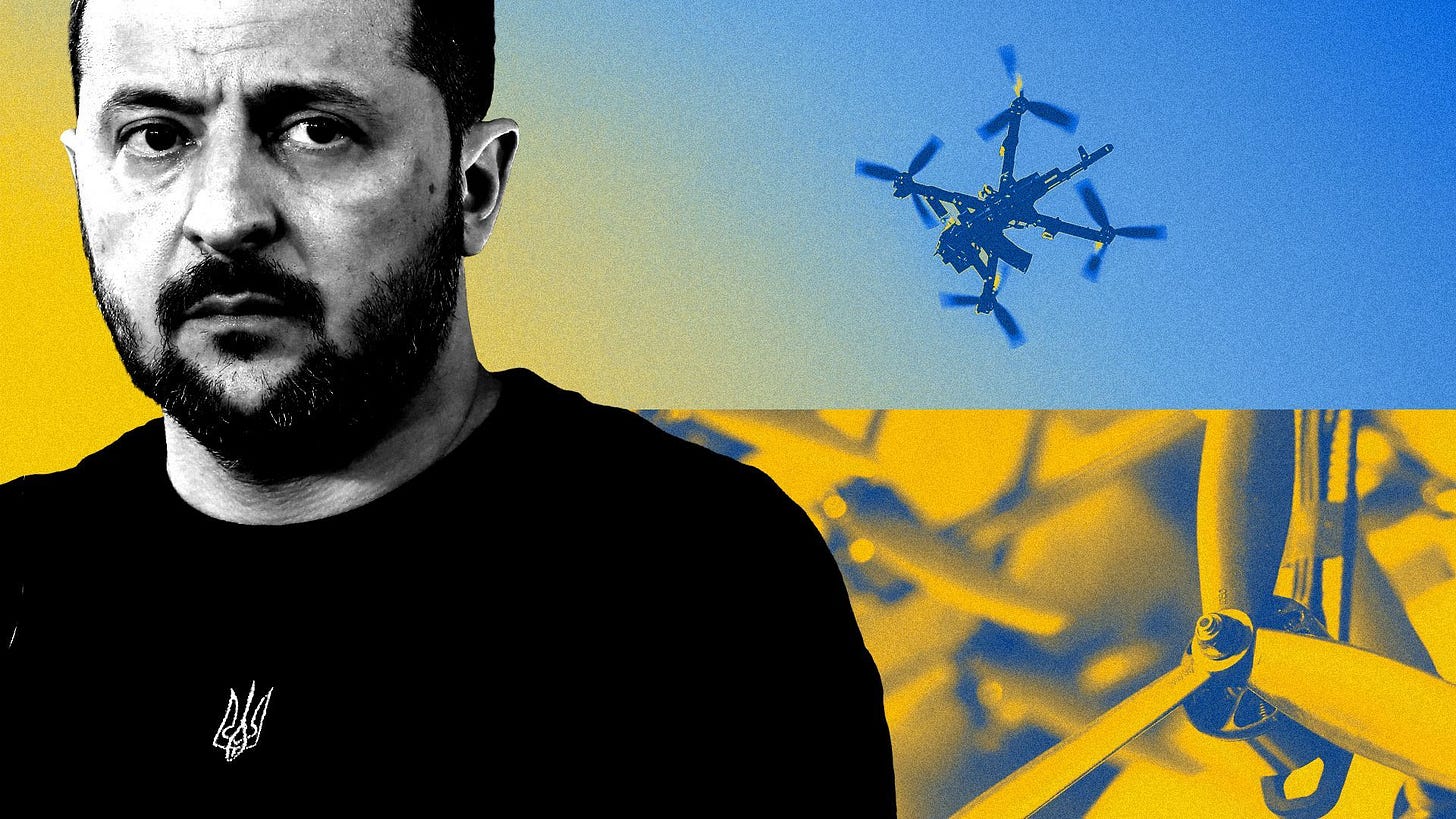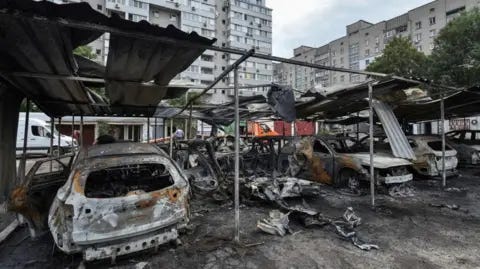Ukraine Holds the Line, Barely
Peace Talks Stall and Western Support Deepens
Three summers into Russia’s full-scale invasion, the war in Ukraine continues with no real ceasefire in sight. Yet the balance of the conflict is changing. Ukraine is not just surviving. It is adapting, innovating, and pushing back harder than before, with the promise of continued NATO backing.
This past week, Russia launched over 400 drones and missiles across Ukrainian territory in a single night. Civilian homes, power grids, and even a kindergarten in Kyiv were hit. These strikes came just as new peace talks were set to begin in Istanbul. Russian officials immediately downplayed the talks, saying no breakthroughs should be expected. That posture reflects a broader pattern. Moscow continues to use negotiations as a stalling tactic while escalating on the battlefield.
Ukraine’s response has been increasingly effective. It is now one of the world’s most advanced practitioners of drone warfare. Units like the 3rd Assault Brigade use reconnaissance drones to spot targets and drop mines behind Russian lines. Strike drones are hitting oil depots, airfields, and logistics hubs inside Russia. Ukraine now produces about 40 percent of its own drones, with that figure expected to reach 50 percent in the coming year.
These attacks are not just symbolic. They are forcing Russia to divert air defenses and shift resources. Several recent strikes reached deep inside Russian territory, including targets near Cheboksary and Engels. In effect, Ukraine is extending the battlefield into the Russian rear, undermining the Kremlin’s sense of control, and impeding its ability to mount a frontline offensive.
At the same time, Russia is trying to mobilize its economy for war. Drone programs are being expanded. Factories have been retooled for military production. The Kremlin is pouring money into weapons systems while launching new recruitment drives, including programs targeting youth for technical military roles.
Despite that, progress on the ground has been limited. Russian forces have made small gains in the Donbas and Zaporizhzhia oblast in the south. The Russians are contesting small towns in a grinding war of attrition with little progress. But Ukrainian forces are holding firm and launching counterattacks where possible. The cost to Russia in manpower and equipment has been high.
Western support remains crucial. Germany is sending additional Patriot missile systems to reinforce air defenses. NATO allies have also agreed to a new arms transfer mechanism. Countries will provide weapons directly from their own inventories, with the United States supplying replacements through its defense industry. This model is designed to speed up deliveries and show long-term commitment.
President Trump, after months of mixed signals, has recently shifted tone. In an Oval Office meeting last week, he endorsed continued military aid and even proposed a deal for the United States to purchase Ukrainian drones for its own forces. He also set a 50-day window for Russia to agree to a ceasefire or face new tariffs and sanctions, and publicly asked Zelensky if he had the capability of hitting Moscow. And just yesterday, Trump moved up the deadline for Russia to two weeks. Whether this represents a firm policy line or a tactical move remains unclear, but the message to Moscow is stronger than before.
Negotiations, however, are still going nowhere. The current round of talks in Istanbul appears focused on prisoner exchanges and basic humanitarian issues. Russia continues to reject any settlement that does not meet its original objectives and rejects the spirit of negotiations with continued missile attacks on civilian targets. Peace, at least for now, is not on the table.
Inside Ukraine, a new political challenge is emerging. President Zelenskyy recently backed legislation that would weaken the country’s anti-corruption agencies. This sparked protests in Kyiv and other major cities and cuts to EU funding, which led to a walk back. For Ukraine’s Western backers, accountability and rule of law remain essential conditions for continued aid. Maintaining internal unity and credibility will be just as important as winning battles on the front.
Russia’s strategy depends on outlasting Ukraine and its allies. The war economy model can sustain operations in the short term, but it comes at a cost. Sanctions are biting. Labor and industrial resources are stretched thin. Civilian infrastructure is being cannibalized for military use. High casualties and rising economic pressure are slowly eroding the regime’s margin for error.
The clearest path to ending the war is to convince the Kremlin that Western support will not fade. Ukraine’s resilience matters, but it needs to be matched by consistency from its partners. Aid must continue. Sanctions must tighten. Diplomatic pressure should be real, not symbolic.
This is now a war of endurance. Ukraine has some initiative in key areas, and Russia is not gaining momentum. But both sides are digging in. The next phase may not be about who moves fastest. It may be about who holds out the longest, and who has more to lose if they fail.




